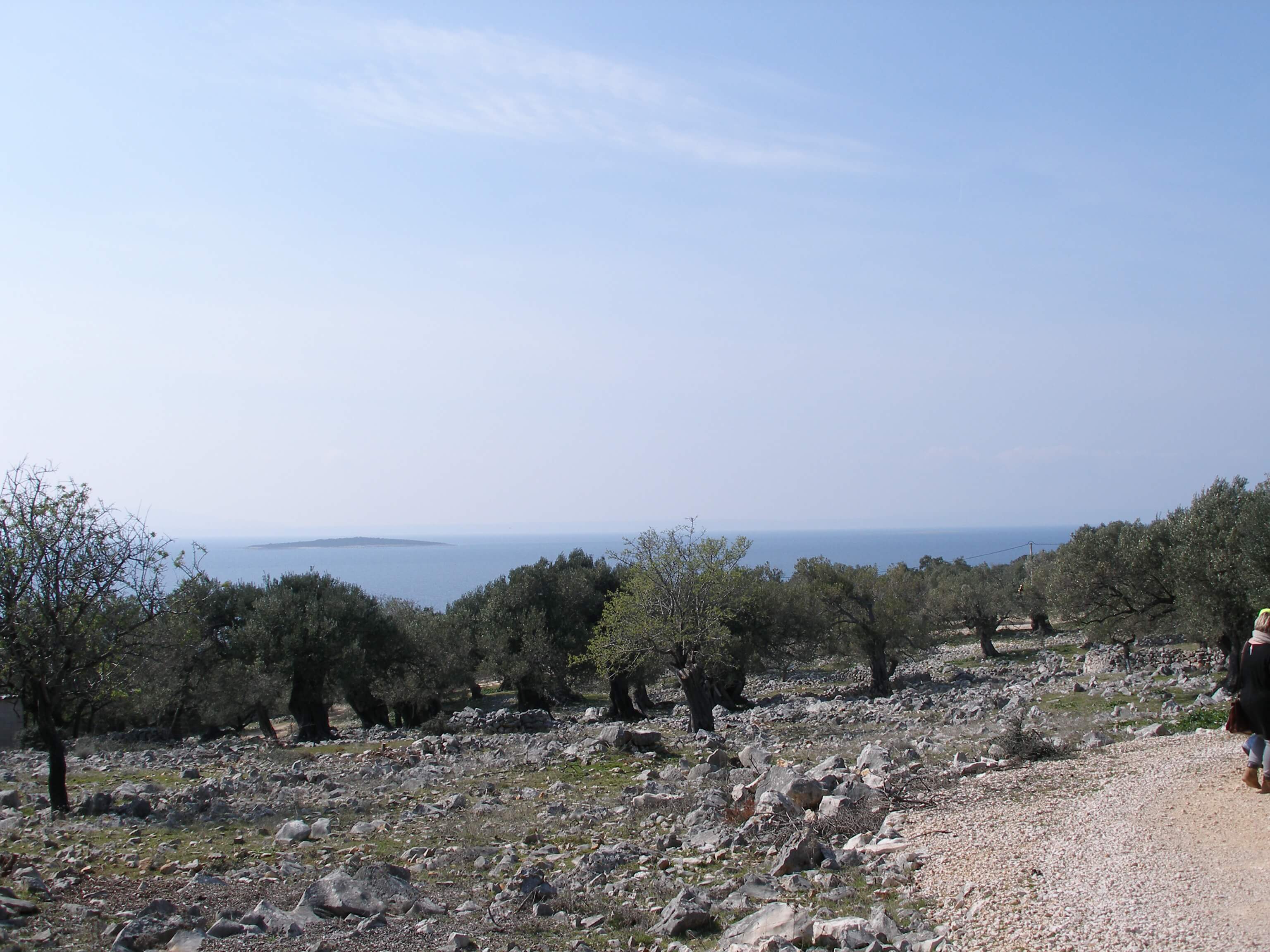Glamping Resort Soon to Open Close to Zrće
Something new for the area as glamping arrives.
Sad Scenes as Dead Dolphin Found Near Pag
Sad news as one of man's favourite animals is tragically found dead near Pag.
Four Islands in a Day as Nikola Tesla EV Rally Moves from Losinj to Zadar
June 8, 2018 - Testing the electric vehicle infrastructure of Croatia's islands, the Nikola Tesla EV Rally heads south from Losinj to Zadar.
Archeologists Make Sweet Discovery at Underwater Site Near Pag
June 1, 2018 — Scientists from Zadar’s Archaeological Museum found luxury ceramics designed to make sugar near Pag, confirming life has always been sweet on one of Croatia's breezier islands.
Could Ibiza Sue Netflix Over Movie Filmed in Croatia?
The local government in Ibiza, an island located off of Spain's coast, could sue the US company Netflix after a promotional movie filmed in Croatia simulates the Mediterranean island.
Gastronaut Discovers the Gourmet and Cultural Treasures of the Island of Pag (VIDEO)
April 24, 2018 - The final piece of TCN coverage of the recent Gastronaut trip to Pag - a video overview from Anna Lisenko.
Pag Triangle: Mysterious Mark Left by an Unknown Force
Pag island never ceases to surprise. A look to a yet unexplained phenomenon on April 12, 2018
Pag Beyond Zrce Party: 48 Hours of Gourmet and Cultural Heaven
April 8, 2018 - Taking a closer look at the fascinating island of Pag, which offers much more than cheese, lamb, bura and party, as TCN found out on the recent Gastronaut trip to the Dalmatian island.
Boškinac Winery & Restaurant, A Quintessential Pag Island Experience
Continuing our coverage of the recent Gastronaut tour of Pag island, a look to a glorious gastronomic destination on April 6, 2018
Olive Gardens of Lun on Pag Island, 1600 Years and Counting
September 20, 2020 - With the olive harvest just a few weeks away, a visit to the most outstanding olive grove of them all - the 1600-year-old olives of Lun on the island of Pag.
Walking around Pag island, it's easy to get carried away, admiring its historic man-made structures: the ancient Roman aqueduct in Novalja, the Renaissance fortifications and churches in Pag town, the former salt-harvesting facilities... Carried away, let me tell you, dazzled by the monuments withstanding the test of time - all the while blissfully unaware of a different type of wonder that awaits only a short ride away.
Head to the northern part of Pag island, pay attention to the road signs - blink, and you'll miss the moment you should get off the main road - and you'll find yourself in the face of true greatness. The olive gardens of Lun, a vast stretch of rocky terrain spanning down to the coast, home to some of the oldest olive trees in all of Croatia.
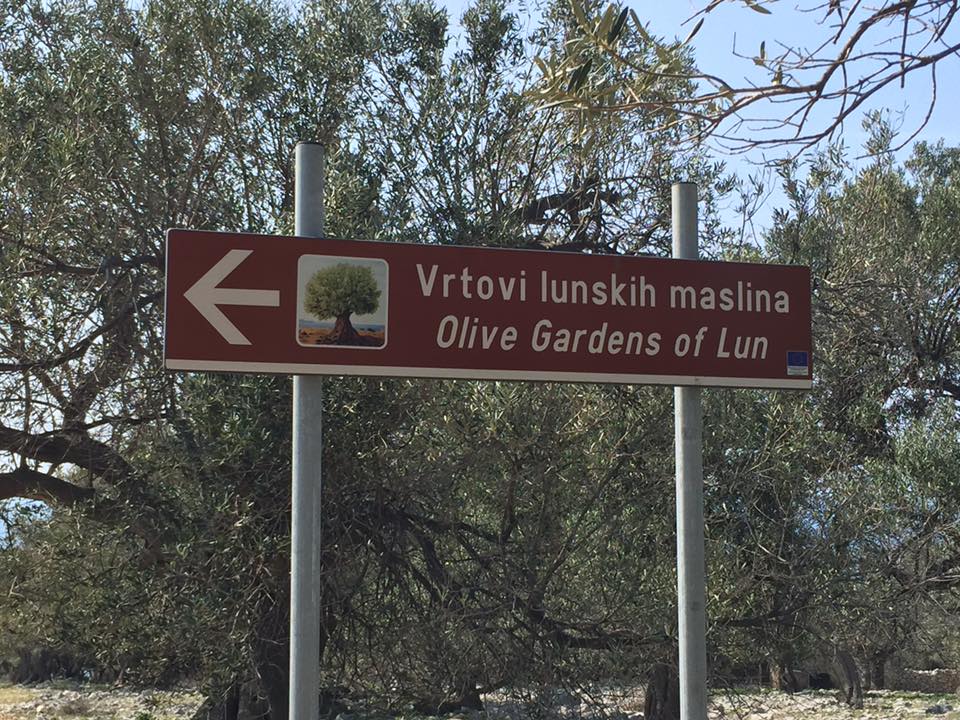
Walking into the gardens of Lun evokes an uncanny feeling of having passed through a portal to another dimension. Whatever sense of time and space you might have had beforehand, it'll melt away, soaking the ancient soil under your feet. Hundreds upon hundreds of olive trees, spanning as far as the eye can see, giants standing still in the crisp light of early spring. There's not a sound to be heard, save for an occasional sheep greeting the unexpected visitors. Were it not for the long stretches of dry stone walls, woven through the gardens like a spider's web, you'd bet your life on being the first human to have ever stepped onto this entrancing site.
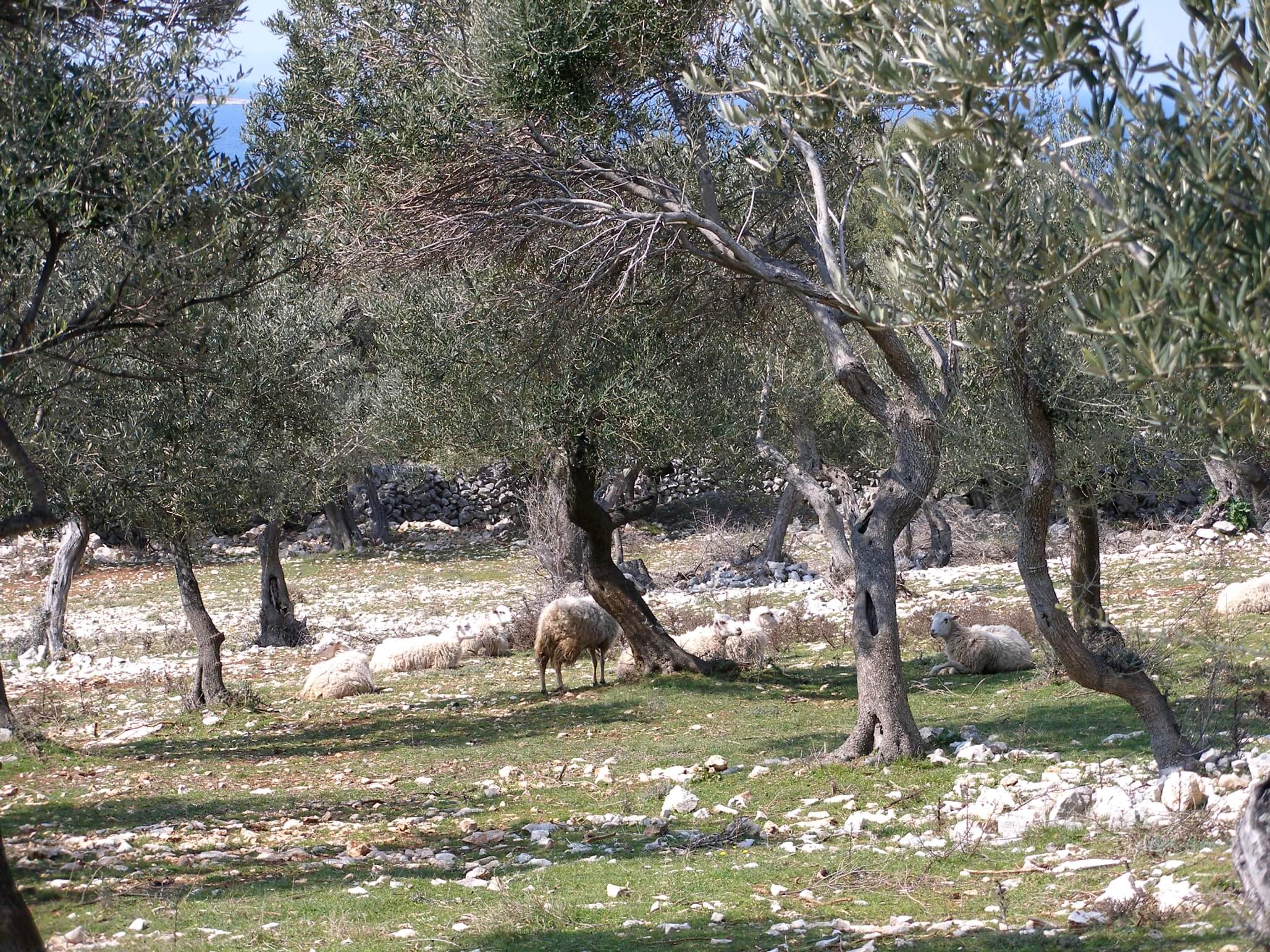
The most famous residents of the Olive Gardens of Lun are the olive trees that are more than 1000 years old. An incredible thing to ponder, especially given the fact all trees on the site began their impressive life cycle as wild olives, initially springing to the surface as unsightly little bushes. Passing by those batches of tiny brittle leaves and thorns covering the ground, you wouldn't even think you're looking at a future olive tree. And yet, with time, they grow into majestic specimen, grafted with the cultivated oblica species by Lun residents later down the line.
The growth and development of the olive gardens is an all-around amazing natural process, primarily owed to two resident animals. Poetically speaking, the gardens were planted by seagulls who are known to feed on the wild olive bushes, lapping up their fruit sized as grains of rice. Off through the digestive system the olives go, the meat dissolved along the way, the pits popped out - and voila, a new tree is born. At one point, people noticed a patch of wild olives growing on a certain part of the neighbouring Dugi otok island - a phenomenon yet unseen, confusing the residents until they realised the area is also home to a colony of seagulls. Yappy staple features of the Adriatic, flying back and forth, helping to cultivate the harsh karst terrain.
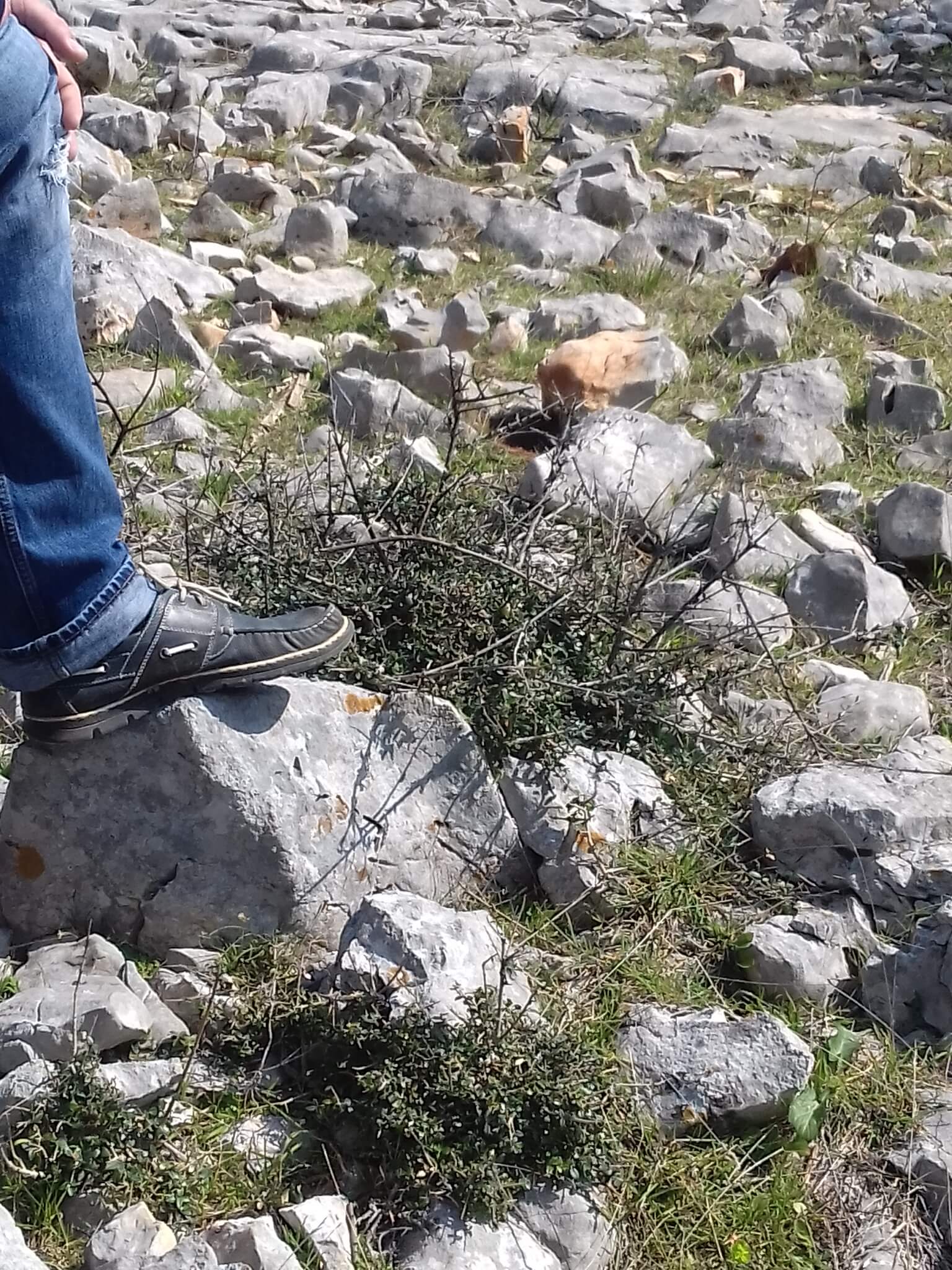
Once the bushes start to take shape, it's the sheep who take over. Vegetation is scarce on Pag island, so every leaf of grass and every tiny herb peeking through the stones make a meal worthy of kings - let alone a nice, delicious wild olive dish. And so the sheep descend on every bush they see, nibbling their way around the thorny batches as they see fit; proper little artists, creating various shapes that look like they've been made by human hand. Walking around the gardens of Lun, you'll notice an occasional ring of dry stone wall - it's been put there to protect a certain growing tree from sheep eager to indulge in this specific gastronomic experience.
The olive gardens span across a surface of 24 hectares, counting an incredible 80.000 olive trees. They might have started their life journey as wild olives, but at one point in time, families of Pag began to populate the area, claiming various parcels of the gardens as years went by. You'll notice each tree is marked with a distinctive sign - some are initials, some blobs of colour; regardless of the type of mark, it's very well known which family each tree belongs to. The locals call them stupi - columns, a fitting choice of term for the timeless giants, standing up to countless centuries, the forceful bura wind and human intervention.
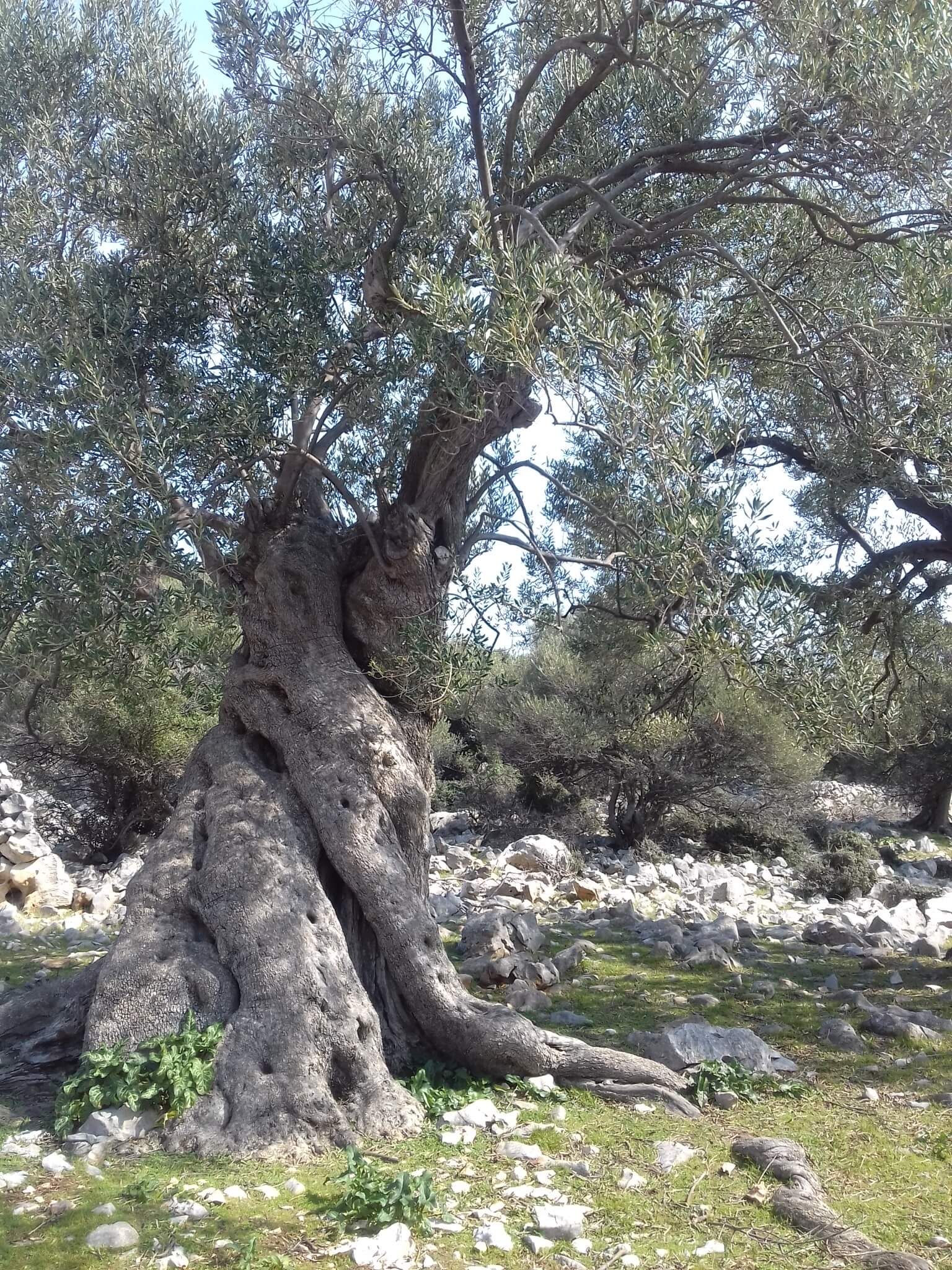
And so we get to one of the more fascinating traits of this unique site. For a nation so keen on spinning poetics about the importance of family as a cornerstone of our society, us Croats sure do contradict ourselves when it comes to actual family matters. It's not a rare occasion to see a family fall apart quarreling over insignificant parcels of barren land, brothers and sisters breaking all contact after failing to agree on the ownership of a couple of square metres of driveway. Families, bickering and picking at inheritance like vultures long before the original owners - their supposed loved ones - have passed their last dying breath.
That said, the residents of Lun make for a rare phenomenon in this particular light. They came, they saw, they marked their trees, and they have adhered to the initial distribution of land to this day. To be more precise, it's not the land this story is based on - it's the trees. The local population has an unwritten rule that allows the original owners of certain trees to continue harvesting the olives from their stupi regardless of who owns the land at any given point in time. A parcel of land can get sold to a new buyer, but not the trees that come along with it; the family which first claimed the trees growing on that specific parcel retains its historic ownership.
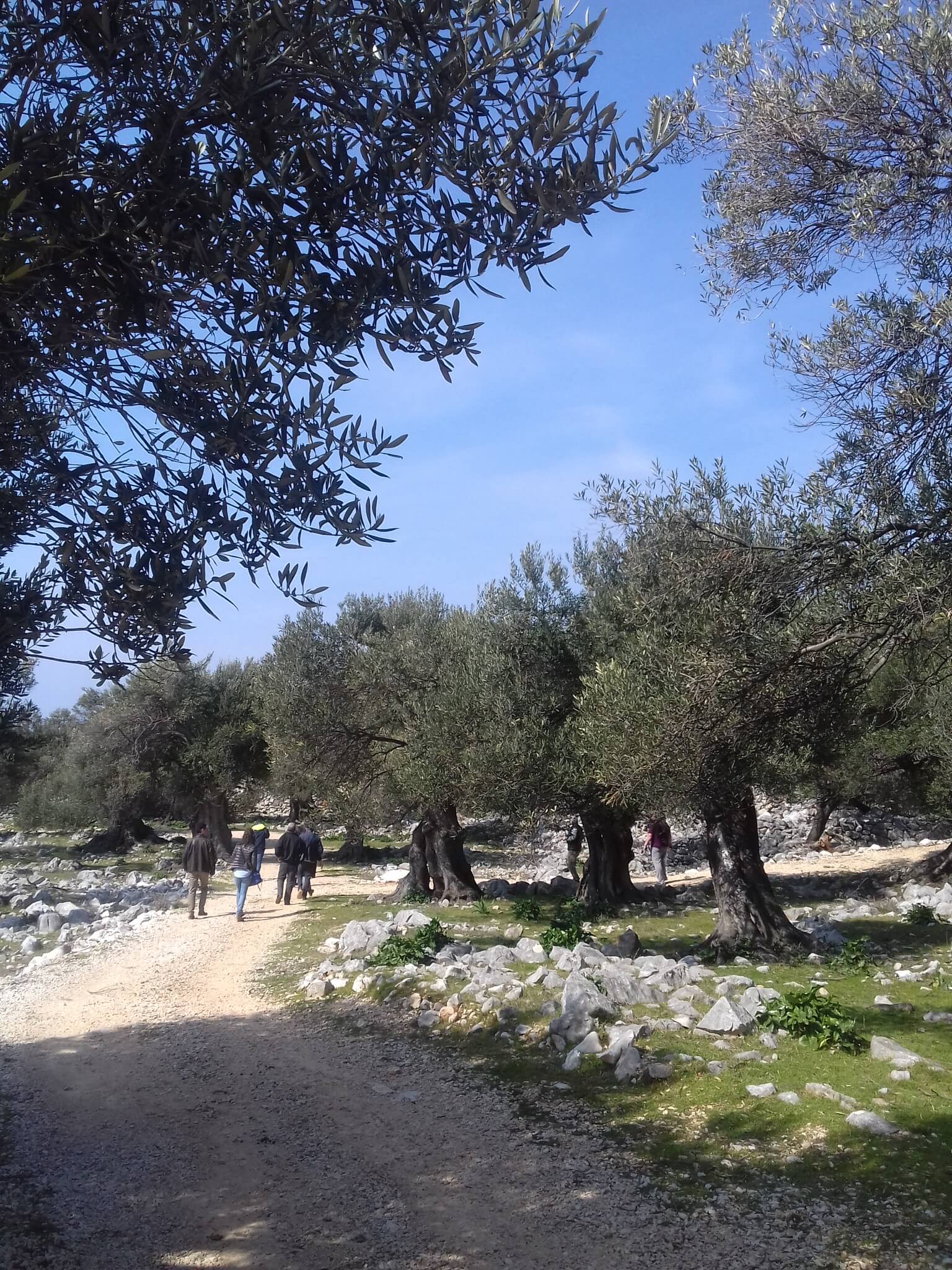
Not once have the people of Lun quarreled over their olive trees - they're known to swap ownership of some trees for practical reasons every once in a while, but they stick together, united in their efforts of protecting the integrity of this natural wonder. Seeing that the Croatian law doesn't exactly recognise their unwritten rule, they refrain from selling land to outside buyers who might start interfering in their well-established way of doing things in Lun.
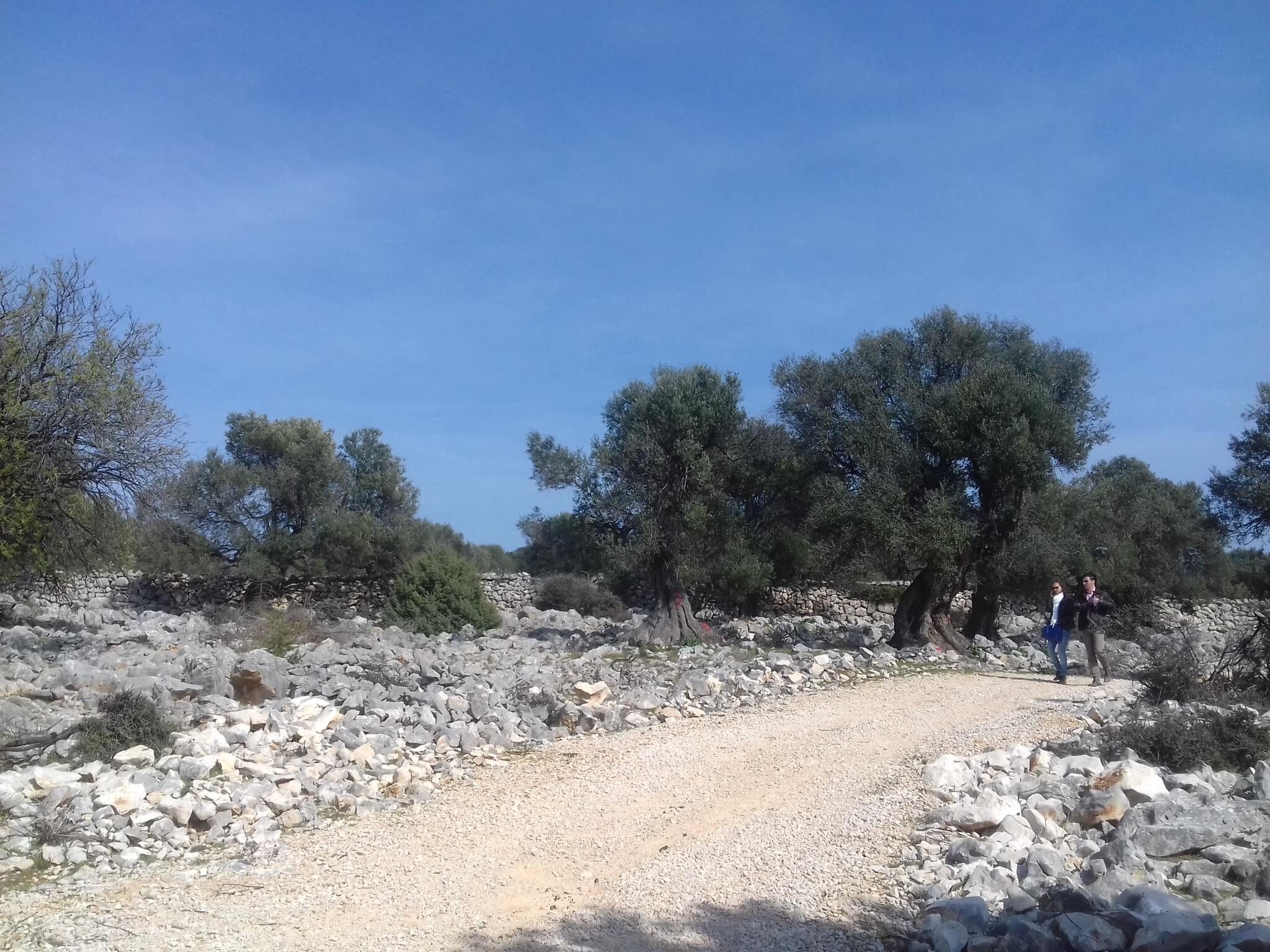
Another interesting thing to note is that the precious trees are mostly inherited through the female line. Throughout history, the young local women had some of their family's olive trees included in their dowry, later transferring the ownership to the families they married into.
There are several olive trees in the gardens of Lun that are more than 1000 years old, making for a unique site that's rarely seen on the Mediterranean as a whole. The showstopper is one particular 1600-year-old, a magnificent being that stands as the main attraction in Lun. How does one even establish the age of an ancient olive tree? Seeing that the central part rots away with time, leaving the trunk to only expand in width, you can't figure out how old the tree is on the basis of growth rings. Instead, a sort of a biopsy is carried out, with a small portion of the external part of the trunk cut out and subjected to analysis. Keep track of the tree year after year, and you'll be able to establish how much it grows annually, measured in milimetres. Compare that to the overall width of the trunk, and you'll know how old it is. 1600 years. You can't help but to feel small and insignificant in front of the immortal being.
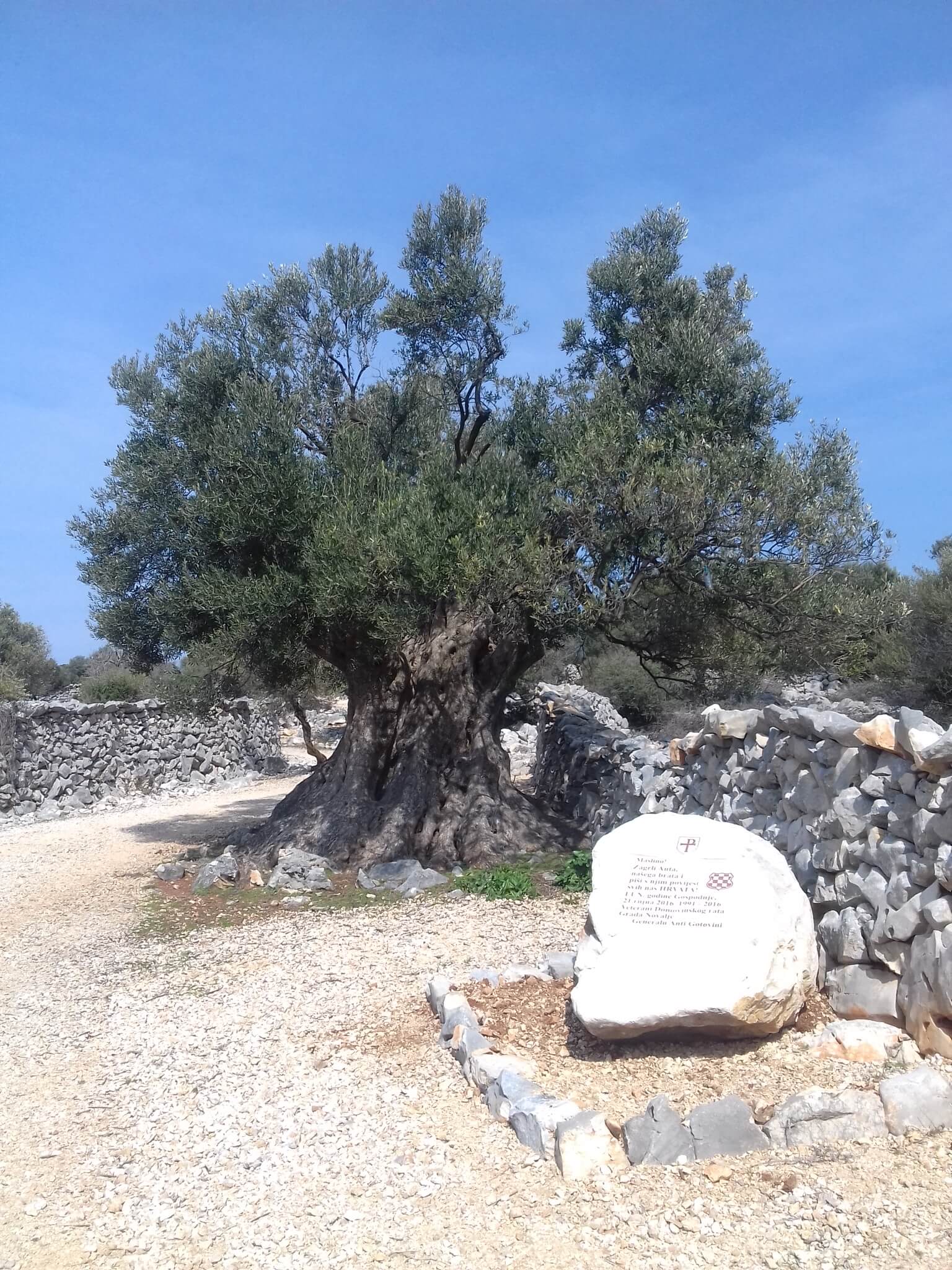
As if its very presence weren't impressive enough, here's another fact to speak of its reputation: three brothers used to share ownership of the tree in question, until one of them decided to turn over all other olive trees and land he owned to the other two, in exchange for the 1600-year-old tree - truly a precious possession.
What better way is there to round up the Lun experience than to indulge in its products? We first popped by for a visit to the Lun olive oil factory, learning about the production process and tasting the exceptional extra virgin olive oil.
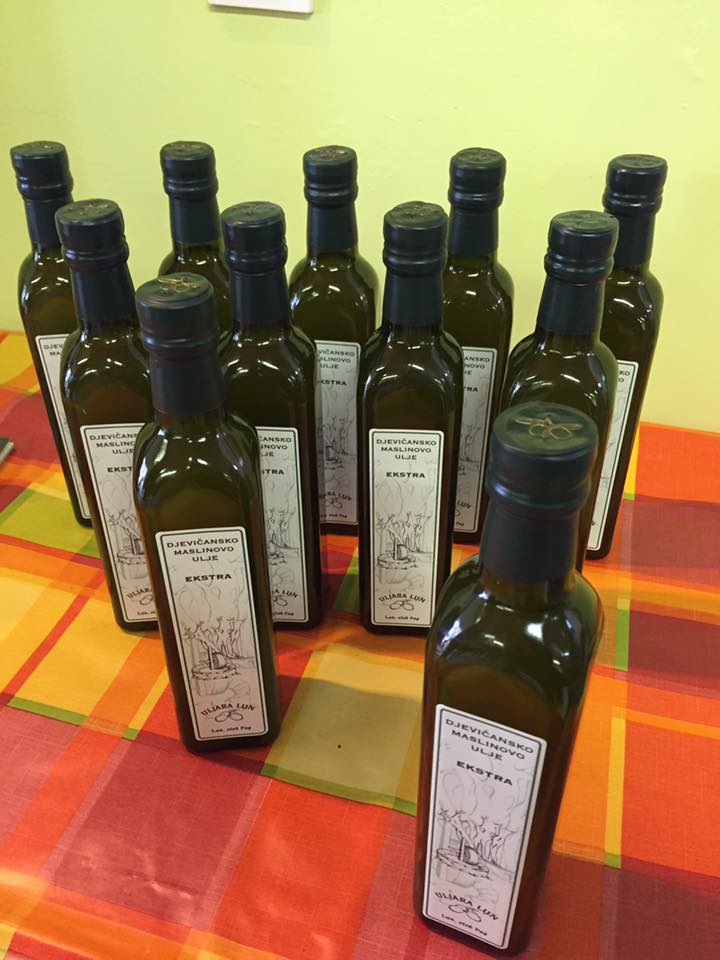
And then, a perfect finishing touch - a picnic! A proper feast in the open air, presented by the president of Lun's association of olive growers Šime Makarun, also the owner of Tovarnele restaurant. An entrée of Lun olives and sheep milk curd...
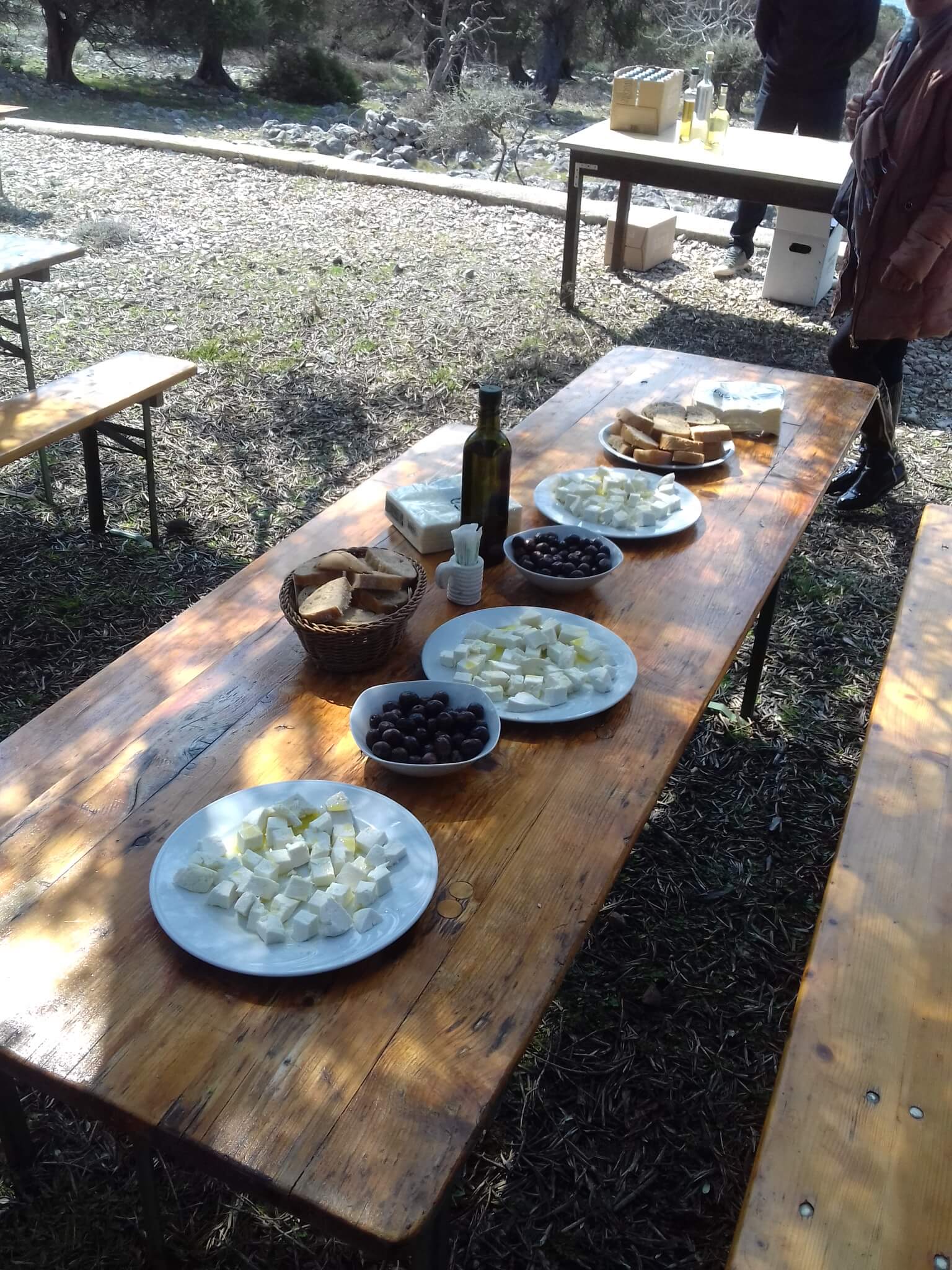
...followed by a phenomenal black risotto and the iconic Dalmatian dish pašticada, complemented by two exceptional wines: Škrlet by Florijanović and Plavac by PZ Svirče.
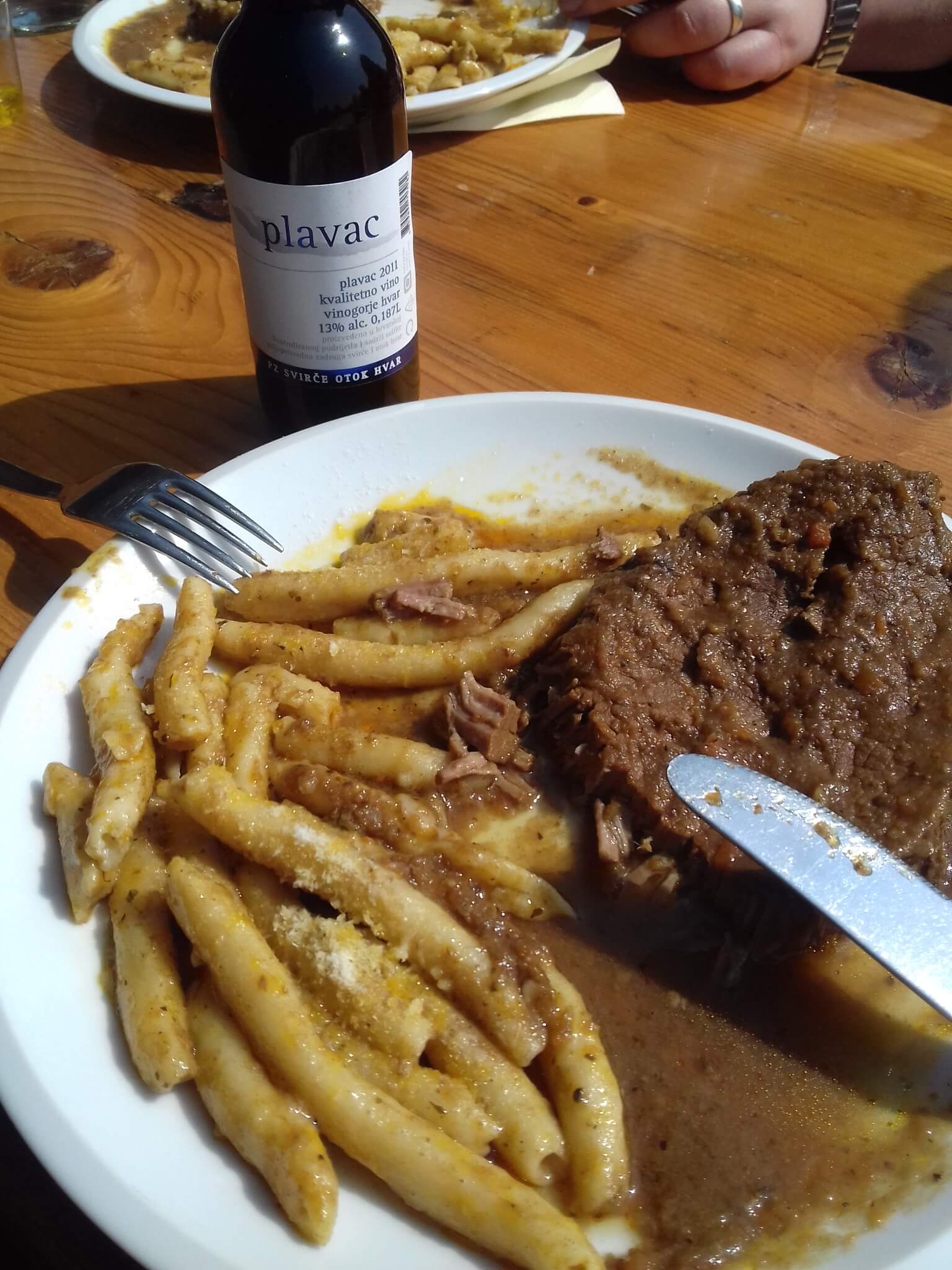
An unforgettable experience. If you're planning a trip to Pag island, make sure to stop by the olive gardens of Lun, immersing yourself in its unique ambiance.
You can visit the olive groves from Monday to Friday, 8:00 - 15:00.
Photo credit: Gastronaut.hr Facebook, N. Demark

